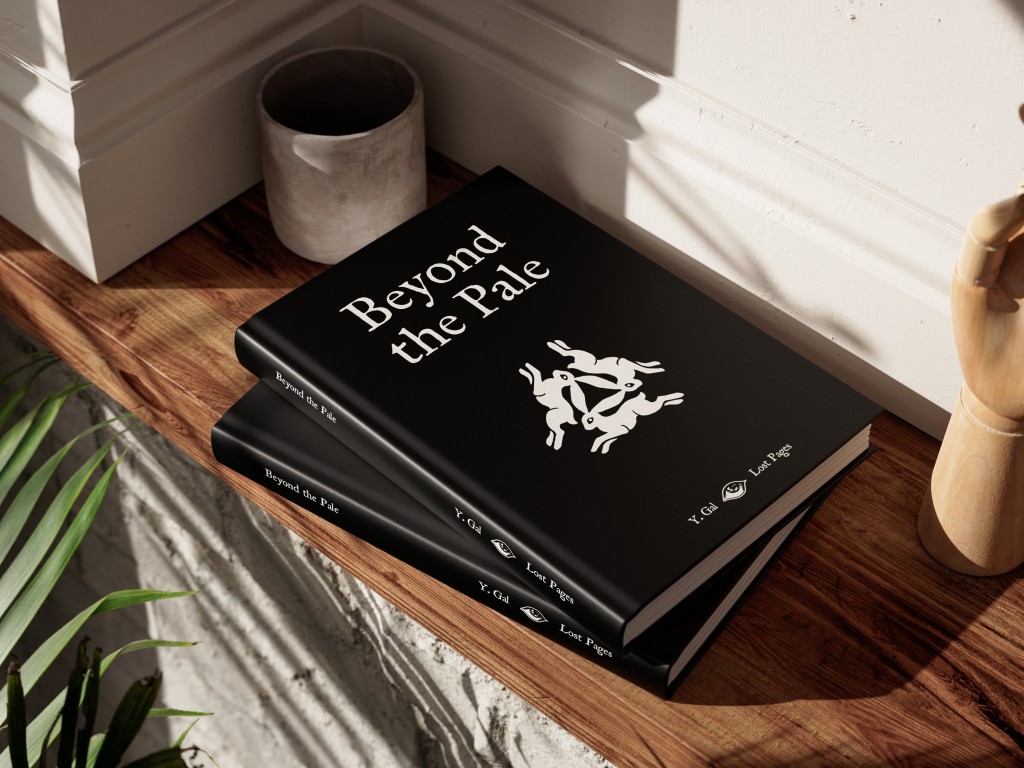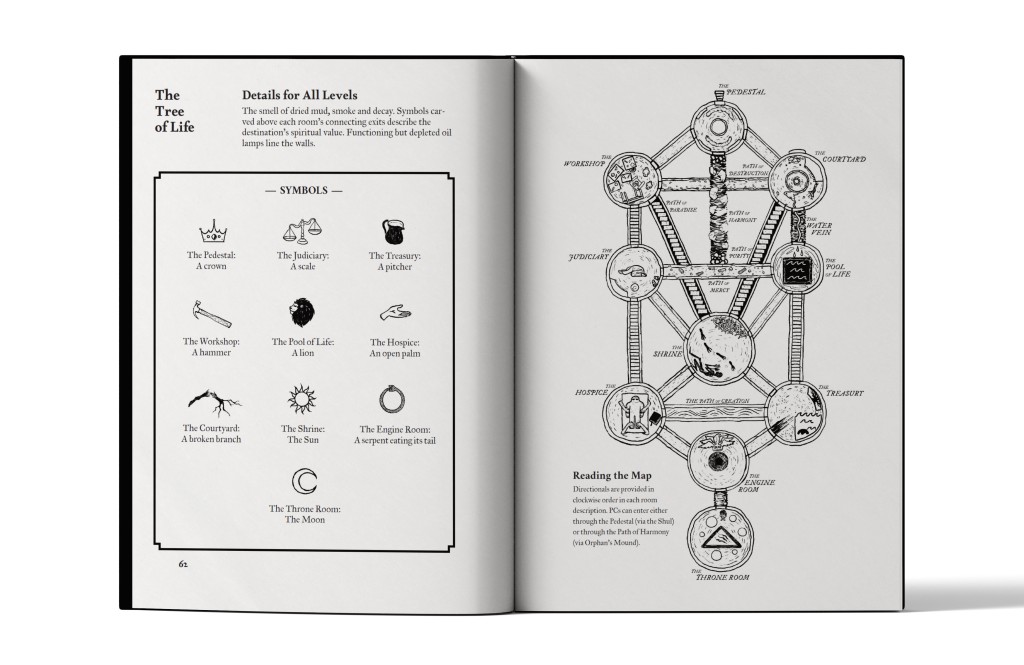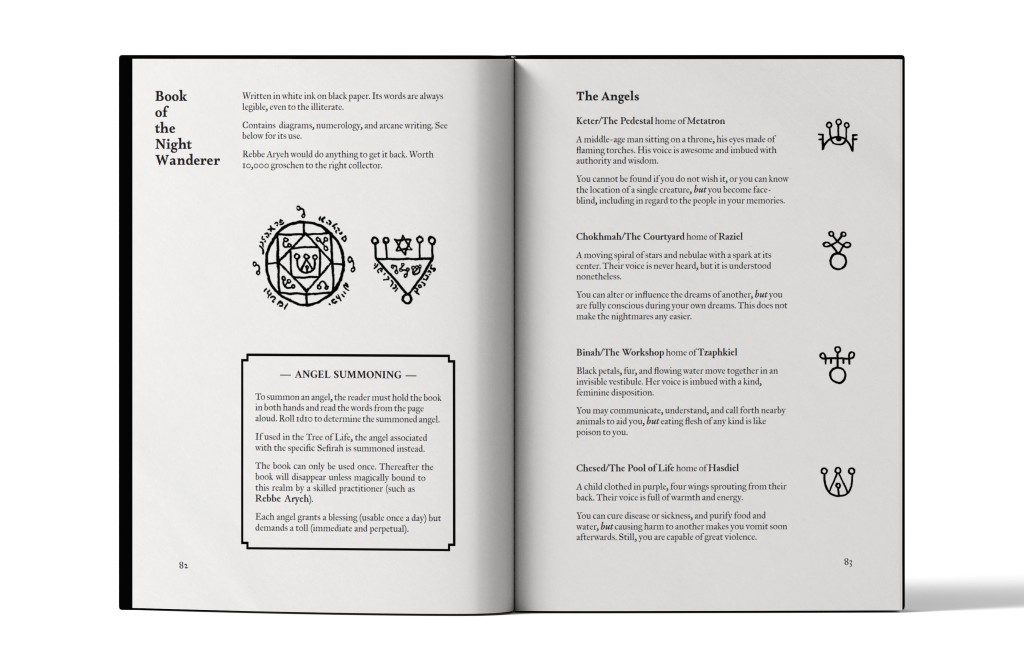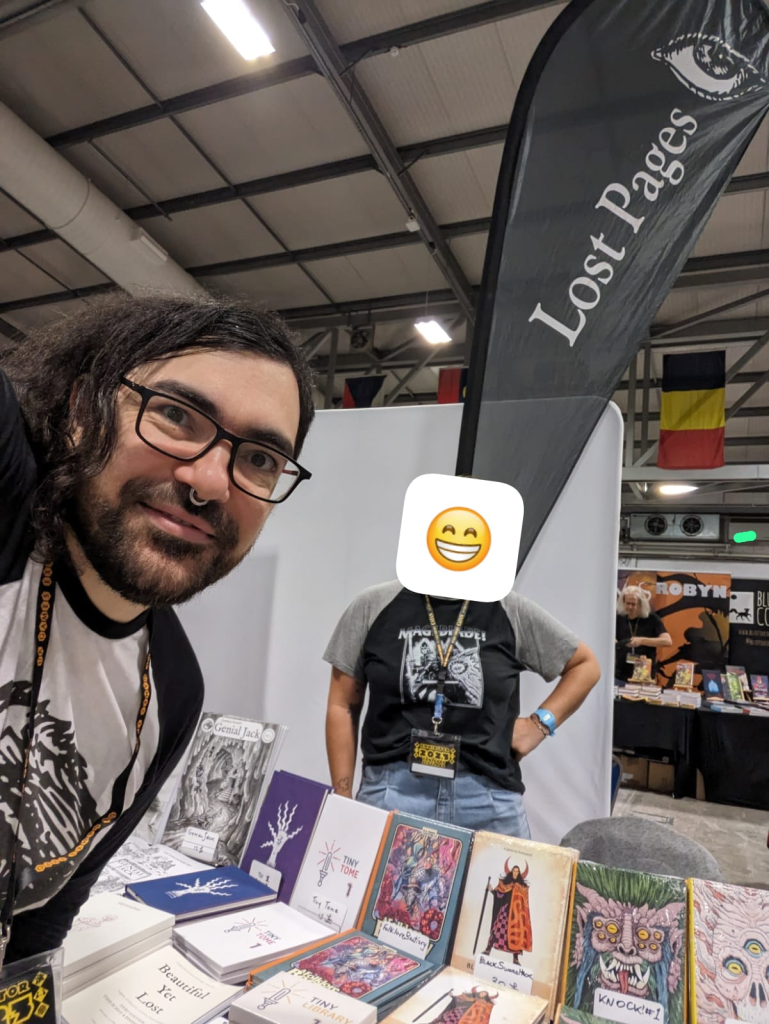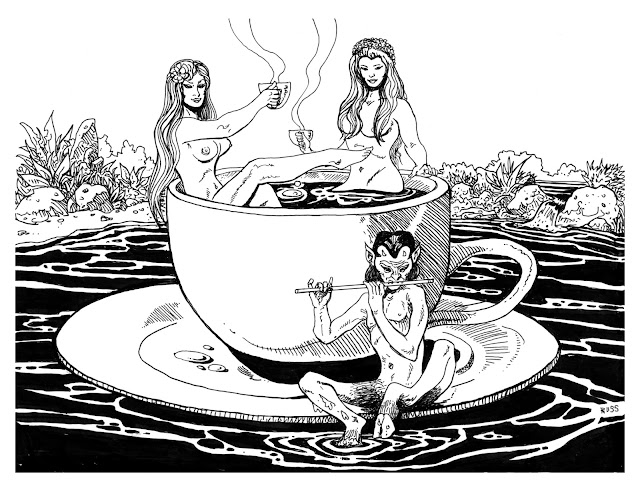This post was originally written for Knock #3, and it’s been amended somewhat. It’s also part of the Dawn of New Thaumaturgy series of posts, which is taking literal years because most of its posts are unfinished drafts.
Classic Dungeons & Dragons is a game with a lot of very abstract rules. Combat is resolved with one attack roll per round, and success deals damage. Finding secret doors takes one turn and succeeds 1-in-6 times. Spells are cast spending their slot and performing the rite. All these mechanics are fairly high level, easy to resolve, and while there might be some modifiers they are very granular and ignore lower-level choices. This is not an oversight, but deliberate: the game is not about combat, or finding that secret door, or casting that spell, but about having an adventure. The rules do not care about any finer detail: choosing to strike the enemy at the legs to slow it down, carefully using a candle to verify if that crack in the wall hides a passage, or harvesting the mistletoe with a golden sickle do not have a direct impact on the outcomes, but are abstracted away.
The issue, though, is that these details are abstracted away: the details to support the narration at the table are absent. One way to solve this is to have more complex game mechanics, but it makes the game experience slower, more cumbersome, and rewards system expertise: I love GURPS, but it’s often too much. Where are we left? An option is to add some narrative flourish, for example how in combat we might say “the bravo swiftly steps to your left to avoid your shield and slashes at your shoulder, 4 damage” rather than just “4 damage from the thug”. Another to zoom in to a puzzle of sorts, like we often do to find secret doors and traps by deliberately poking and pulling things. Both are approaches that help push the game narrative forward and enrich our experience.
For magic, the situation is different. Spells have a greater impact and their slots are scarce, so they already have bigger chances to be momentous. The issue with spells though is that most D&D spells are both abstract and dry as hell: in the Theatre of the Mind, abstraction dries passion, and does not help with meaningful stories.
Concrete Magic: the Passwall-Maxilor index
Does anyone remember Passwall? Straight from fantasy fiction, the spell creates a magic passage in a wall. You can go through it. It’s really helpful to delve deeper, bypass a door, escape a situation, provide tactical opportunities. If the spell ends whoever is left inside the passage is crushed (or spit out, depending on the edition). It’s a good, useful spell that some GM hate because bypassing encounters is “bad”, while I think bypassing problems is great.
The Spell of the Subterranean Gullets (by Brendan S., published in Wonder & Wickedness) is an invocation to the great chthonic god Maxilor. All subterranean cavities, tunnels, and pits are his mouths, throats, and visceral cavities. This spell (or perhaps prayer?) compels Maxilor to open one such opening in stone. At the end of the spell the passage closes; whoever is still there is lost, probably devoured by the god.
The two spells are mechanically the same. They have the same effect on the game world.
Yet, one is barely a sleight of hand involving a wall, while the other is an awesome experience stepping in the moist, holy maws of a greater god, and possibly being eaten alive. The spell achieves this by virtue of being concrete: it starts with an invocation to a god, and the god has a very clear and relevant context (the subterranean gullets). The chance of becoming a tasty morsel provides some emotional colour, and also ties the spell to the Classical tradition of offering buried sacrifices to chthonic gods*.
Just add Concrete Sauce
How do we make magic more concrete? My suggestion is to write concrete spells and use those, or rewrite spells in a more concrete way. That can be a whole lot of work, possibly left only for folks as obsessed as the author (or anyone writing in KNOCK!, I would add. — Eric). The other option is to make blanket changes in how magic works: it’s more effective effort-wise, but might require more finangling later. We are introducing meaningful elements so we can have more opportunities for interesting play.
This segues into another advantage of concrete magic: as we can make more sense of the causes and effects, adjudication in complicated situations becomes a source of shenanigans, the dream fuel of OSR-style emergent play.
Here are a few ways in which you can pour concreteness into your magic. They are mostly inspired by historical European and Mediterranean esoterica, and they do blend into each other, so I strongly recommend to mix them for full potency. Find in these proposals what makes sense in your worlds and brings meaning to the table.
1. Natural Magic: the natural world has intrinsic magic qualities ready to be exploited. For example, a tree stuck by lightning makes excellent wands to cast Lightning bolt: nature (or the god of thunder) chose it for reasons that we do not understand, but we can exploit its cozy relationship with lightning nonetheless. The easy way to make this work is to add more meaningful components – verbal, somatic, material – to spells. Fly is useful, but what if you whooshed through the skies propelled by feathered fans? Web is great, but it would be much better if you needed to draw extra eyes on your face and eat a bag of flies before you can spit out strands of sticky silk from your nose? Tenser’s Transformation turns you into a fighting machine, but what if it required you to don the skin of a ritually slain bear and tear into your flesh with your nails to become a beast? Suggestion is great at convincing people to go away, but it would be even better if it was a funny limerick about that lad from Bonnyridge who jumped off the bridge (of course you’d need to come up for a rhyme that works for your circumstances). Fear is a powerful spell, but what if you cast it shouting, while drumming on cymbals?
Strive for iconic and meaningful: without going in details about sympathetic magic, use mimicry, metaphors, and similes as components. It’s not a lot of effort: it adds a note of colour to spells. It also paves the way for small adventures when gathering components. Do not make simple components hard to find, maybe just inconvenient! (Like head feathers from a dire swan, for example.) However if your wizard wants their spells a bit stronger there are plenty of adventures looking for griffon or phoenix feathers for their fans, or drums made with wolf-skin or tiger-skin or tyrannosaurus-skin.
2. Emanations & Alignment: The influence of stars and planets is an excellent source of magic. These are somehow completely absent in D&D, their role taken by alignments, planes, and gods. True to its heritage of a game created in a strongly aligned world on the brink of mutually assured nuclear annihilation (the 1970s were a fun time), D&D pits the conflicting structures of reality of Law & Chaos and Good & Evil against each other in a struggle neverending.
Let me spell one important thing out: I’m not a fan of alignments as moral compass, and moral relativism is something that many of us take for granted. This is not how the premodern mind works, though. Most of humanity in history knew gods and demons and their powers were real, exactly as we know nuclear missiles and their programmed holocaust to be real. They bow to their gods, as most of our world bowed to one or the other side during the Cold War.
The biggest direct evidence for this is that Dungeons & Dragons is a game with an in-world literal moral compass: the Great Wheel is real, the moral compass pointed by scores of Gods Enthroned. Them, and the myriads of demons, and angels, and chaos frogs dancing for them are all real as the screen you are reading on. Good and Evil and Chaos and Law are, in the game, immanent.
PCs can avoid the struggle, stay Neutral, and have their spell election reduced, or join the struggle and become aligned, therefore gaining access to aligned magic, better suited to eternal war. I believe any other use of alignments in D&D is source of much wailing and gnashing of teeth at your table. I also only use Chaos and Law.
This gives a huge opportunity to ground spells. D&D’s Un/Holy Word is a good example: spelling out the pure truth of divinity is harmful to the uninitiated exposed to it (the differently aligned), certainly too much for their heathen souls, hurting them possibly to the point of death, as clearly shown in Raiders of the Lost Ark. Turning Undead is another very good example, but limited by the history of the first D&D cleric being a vampire-hunter. Turn Undead is an exorcism, and humans through millennia cast exorcism on many, many things beside the living dead: demons, diseases, spirits, ill luck, feral beasts, the evil eye, possibly even invaders, certainly bad intentions. It’s easy to make exorcisms more diverse, more relevant to alignment, and available to aligned casters, or swap them for other rites. The key here is to find the mood or objective of the alignment and have the exorcism/rite work toward that. Also, it would maybe be possible to grant a small boon to those of the same alignment present during the rite, maybe a small bonus, or a bit of healing, or advantage on a roll.
Aligning spells might make them concrete enough, or they might require some minor alteration. A low hanging fruit is clear from the examples above: aligned magic can tell apart friends and foes. As a matter of fact, the caster won’t be able to stop it from doing so, and the issue here is that the friend-or-foe identification is not decided by the wizard, but by the spell. The wizard trades power for agency, becoming stronger but more of a conduit, a tool instrumental to an end, as the stronger-willed spells make decisions for them. And if you think the struggle is only a concern for casters, do not forget that the best D&D magic swords are aligned too, sharp gears of war eager to enroll worthy fighters into the deadly struggle, and take over their agency too.
This kind of approach can also be used with other “factions”: it works perfectly for a struggle between the four elemental-aligned factions (you might have heard of a cartoon stushie involving firebenders). One last thing: unfortunately in vanilla D&D this kind of emanations are oppositional, but they do not need to be! Maybe in your world there is space for a mingling of the opposites that does not result in permanent cosmic war?
You can also ignore all of the above, and add planets and moons: their phases affecting their spells’ effects. While you are at it, introduce star signs and give each character a random, situational, and really quirky modifier.
3. Animism: instead of channeling power to affect reality directly, you beg or summon a god, spirit, or daemon (a servant spirit) to do the job for you; for all intents and purposes these beings all lie in a continuum of increased power and crotchetiness. To start summoning daemons in your games the easy way is simply to get the spell list and associate some (or each!) spell to daemons. The daemon could be summoned either in normal casting time (to get the standard spell effect) or as a longer ritual spell, in case the summoner require the daemon do to something more involved, like teach their arts, give advice, or craft something. If you want a good example, the Ars Goetia in the Little Key of Solomon lists scores of daemons, along with aspects, personalities, competencies, a personality, and a whole lot of knowledge.
The hard part is to actually get the daemon to do your bidding (as games folk, we want to compensate for the increased flexibility). Try a reaction roll every time you make a demand: a positive result means compliance, a negative one snubbing or worse, a neutral one a delay, as the spirit demands something in return. Of course daemons would be more cooperative when it comes to carrying out tasks that please them, and sacrifices and other appeasement might make them more pliable, giving permanent reaction bonuses. You might also threaten them into compliance: in this case roll again, but at the price of a permanent negative modifier. And if the roll is particularly bad the daemon might decide to not go away, and possibly haunt the caster. Banishing it becomes the next adventure goal!
Another approach is to require spiritual intercession: for example to cast elemental spells, you need to ask an elemental spirit. This means bringing with you a live fire to cast Fireball.
* Puppies at crossroads for Hekate, or so they say.



